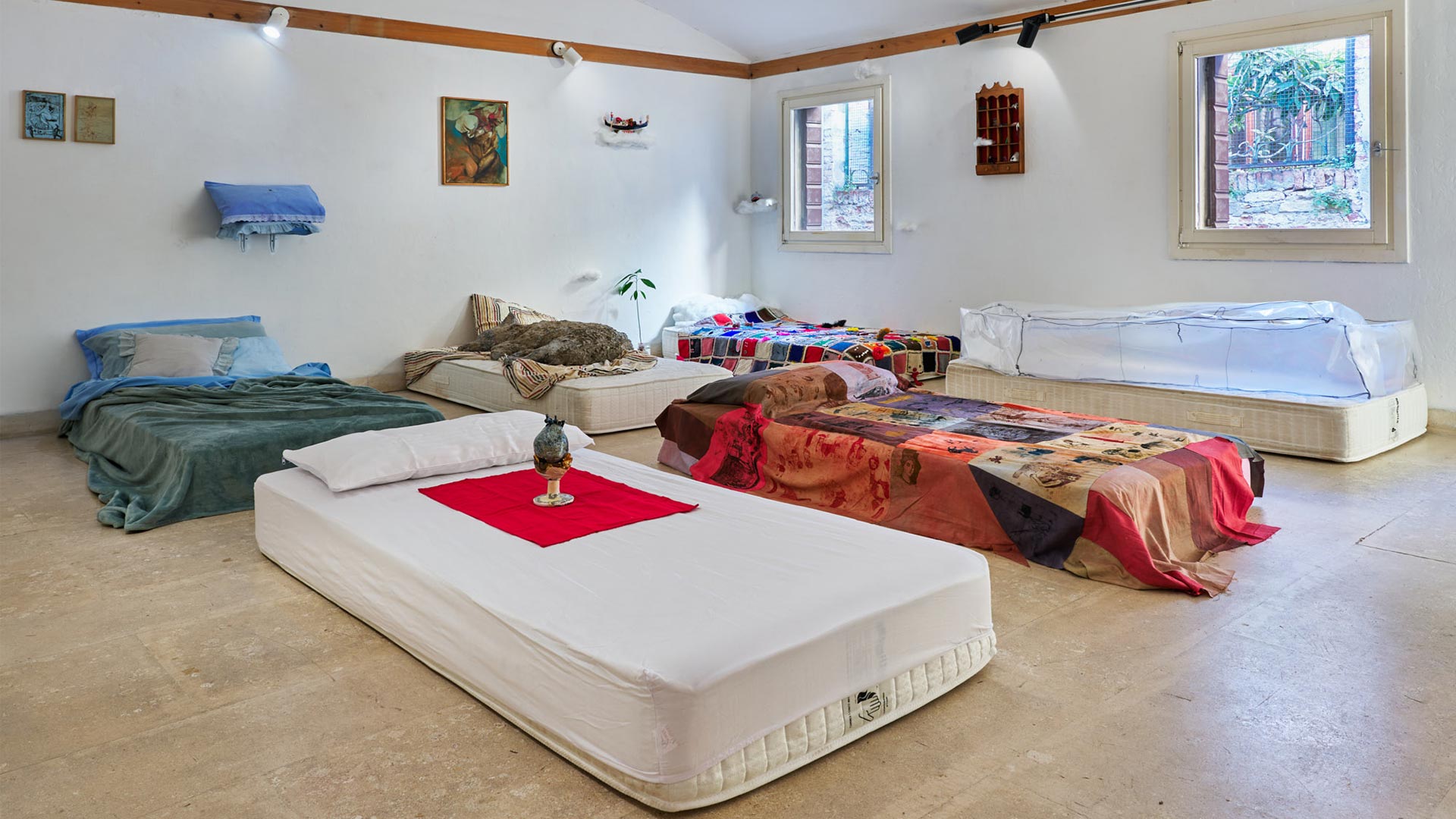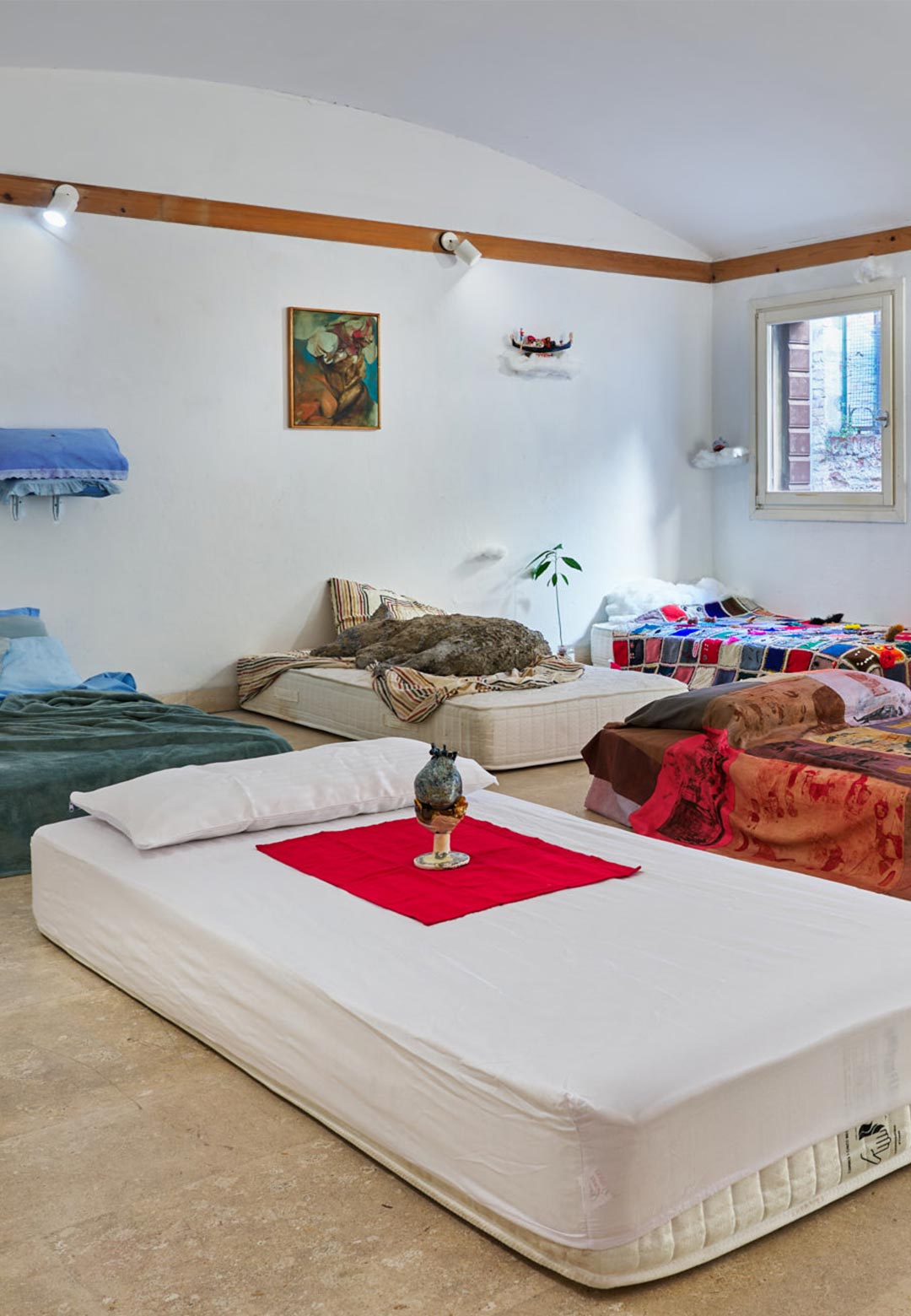A plus A, a Venice-based gallery, draws on the myth of the Hôtel-Dieu (Hostel of God) in an ongoing exhibition. On display from November 24th, 2023 to January 20th, 2024, the exhibition takes cues from the layered history of inns and the many metaphors philosophers have drawn from them. Hôtel-Dieu was a common name given to the largest rest stops in a city during the Middle Ages. Free for the poor, these inns doubled as resthouses for the homeless, hospitals, and places for religious congregations. The image of the inn was famously employed by German philosopher Walter Benjamin in describing the fleeting, unstable lifestyle of the Boheme, or the artist. This reference is further supported by this quote in an official press release from A plus A, which cites Benjamin stating, “[The Boheme is] the training ground for the artistic life; it is the steppingstone to the Académie, to the Hôtel-Dieu, or to the Morgue.”
Utilizing this comparison by Benjamin, the gallery imagines the inn as a space where the ‘poor’ might “display the photograph, the drawing, the book, the letter, the pin-up poster, the one thing you could save whilst everything else got lost or was stolen from you. Maybe it’s an angel drawing from Paul Klee, or maybe a purely random item from your former household — but it is the object that still sticks with you. It’s only in a Hôtel-Dieu where you understand the true value of beauty and things.” The attempt is to reveal the stark class differences that exist in the mediation and consumption of art throughout history by bringing forth the aesthetic of the impoverished classes, or at the least taking inspiration from them. This is showcased by the artists on display. The curators brought together 27 artists for the immersive exhibition including Barbara Prenka, a textile artist; Italian visual artists Pierluigi Scandiuzzi, Francesco Casati, and Giulia Maria Belli; Italian sculpture artist Bruno Fantelli; and Italian artist Thomas Braida and Bulgarian artist Anastasiya Parvanova among others.
Taking the form of beds as display pedestals and spatial organizers, the layout of the art exhibition is meant to invoke the idea of Hôtel-Dieu through the ages. It features paintings, sculptures, and other paraphernalia that bring to mind notions of rest, entertainment, and consumption one might associate with inns. The gallery goes further to draw parallels between the devolution of the inn and the emergence of modern lifestyles, inevitably leading to the rise of progressive art and the transformed figure of the tramp. The tramp and the history of the inn are invoked in the curatorial statement to signify the inherent fear of the masses against impoverishment which is expressed through art. For instance, the reality of social injustice and the systematic unfair distribution of wealth was the social norm for most people at the time of the World Wars, when the figure of the tramp flourished.
This social reality and an underlying anxiety about the state of the world is something the exhibition develops by drawing on the historical space of the inn. Pieces such as 'The Beds' by Scandiuzzi and Prenka offer commentary on the current state of homelessness in Europe, while other installations reference fears of immigration and unstable economies. Anxiety about the climate crisis, the impending economic crisis, and unnamed pandemics run rampant through the world today, exacerbated by growing economic inequalities. A fact that the gallery argues art must contend with. The showcase seems to say, ultimately, there is no escape from the Hôtel-Dieu.
The participating artists include, Giulia Maria Belli, Alessandro Bevilacqua, Thomas Braida, Ornella Cardillo, Simone Carraro, Francesco Casati, Nina Ćeranić, Weichao Chen, Nebojša Despotović, Daria Dmytrenko, Jingge Dong, Bruno Fantelli, Greta Ferretti, Leonardo Furlan, Enej Gala, Bogdan Koshevoy, Giulio Malinverni, Anna Marzuttini, Alesssandro Miotti, Sebastiano Pallavisini, Anastasiya Parvanova, Edison Pashkaj, Barbara Prenka, Simone Rutigliano, Pierluigi Scandiuzzi, Mattia Varini, Francesco Zanatta.






 Sign in with email
Sign in with email










What do you think?